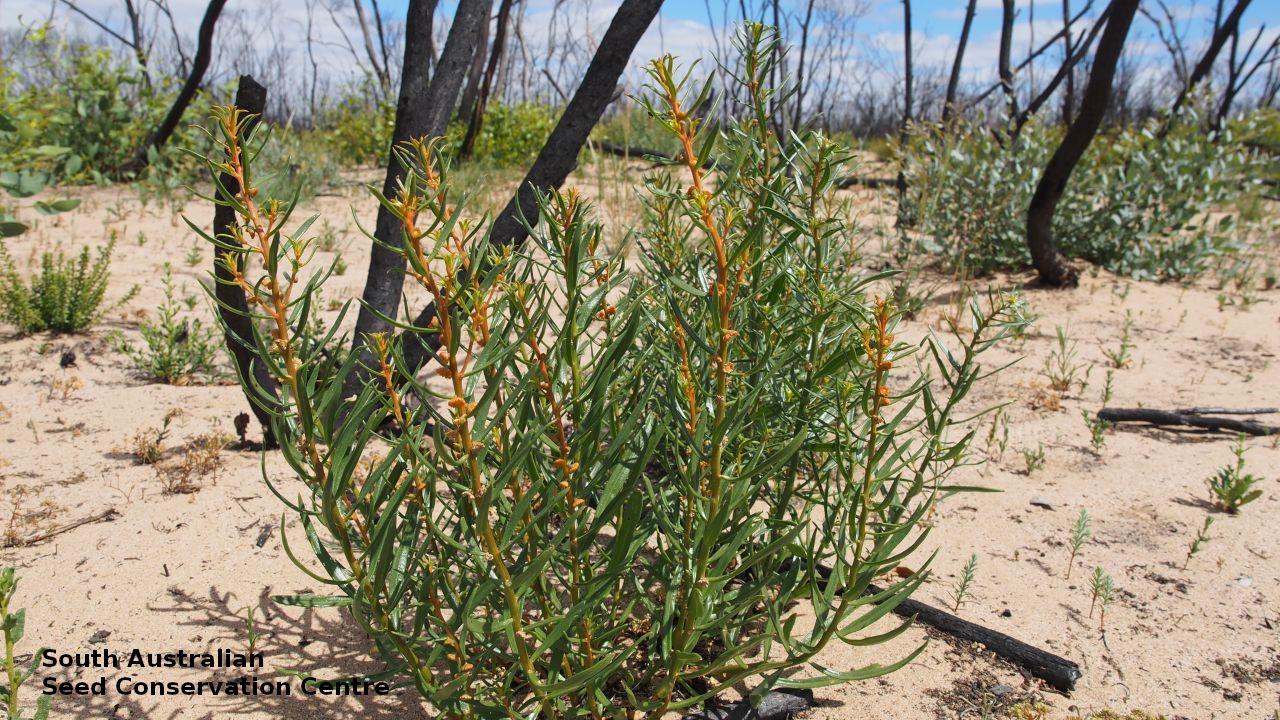
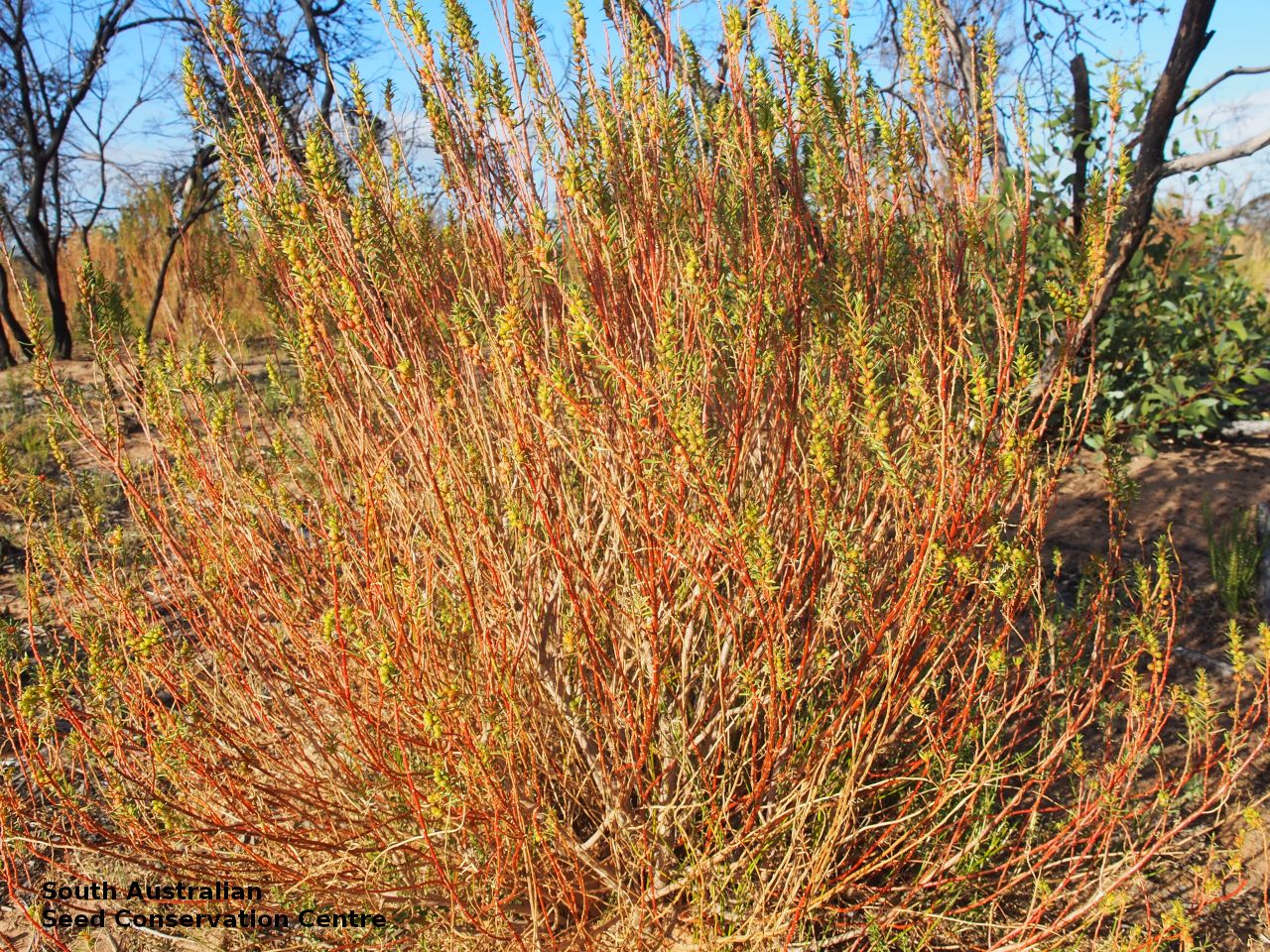
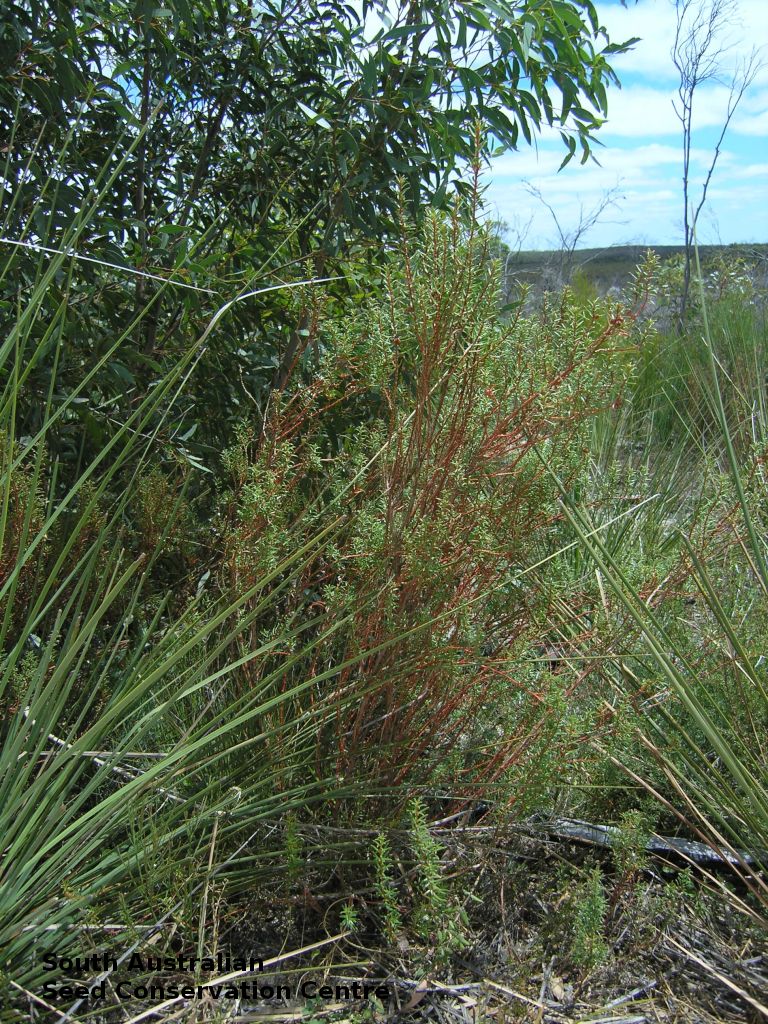
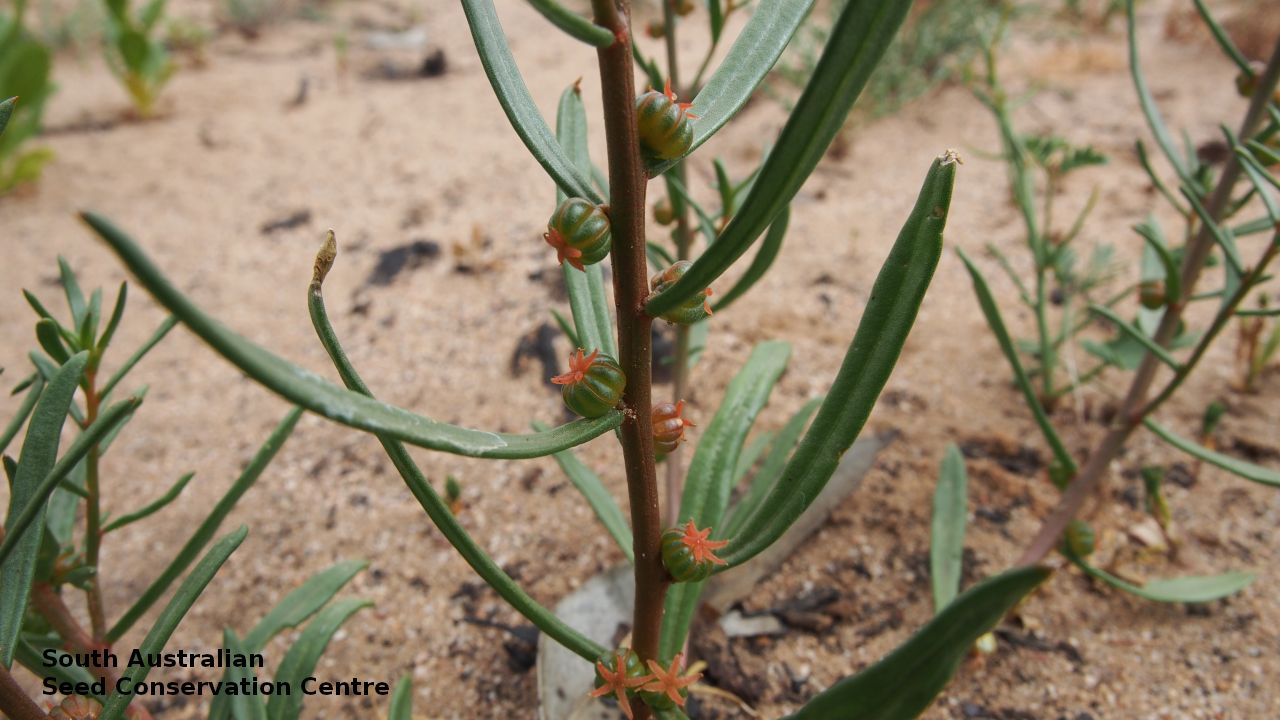
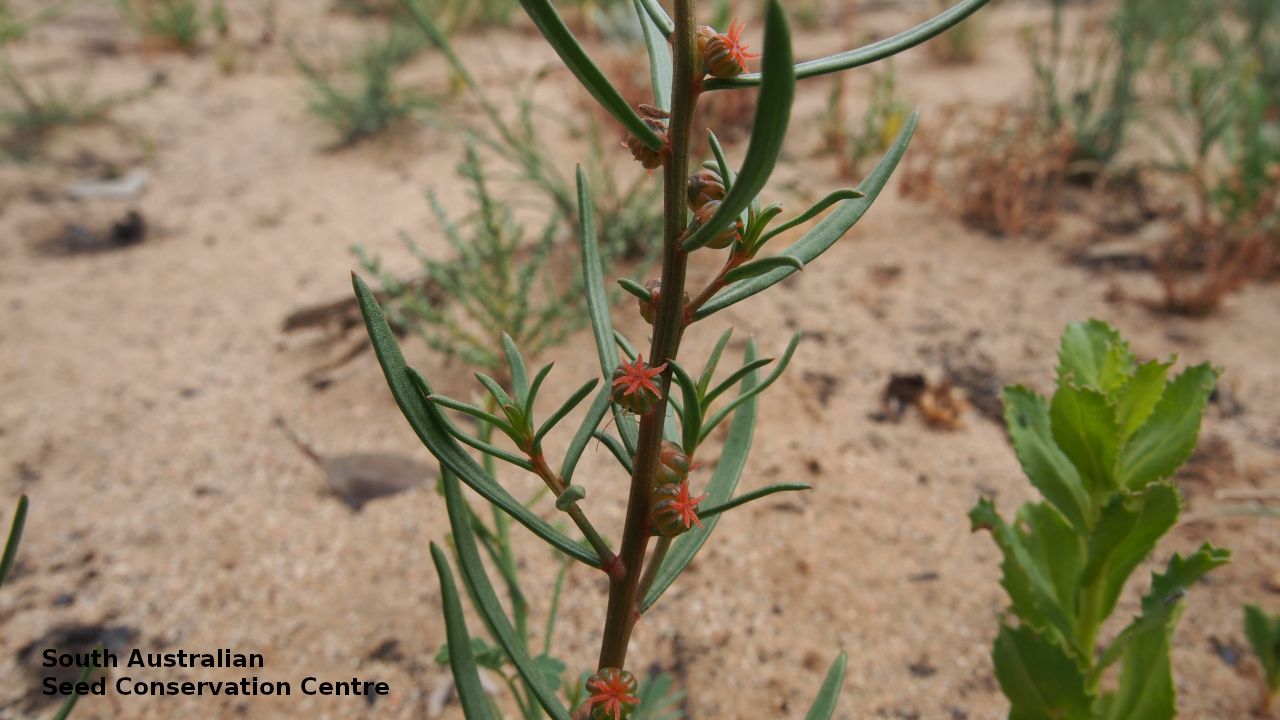
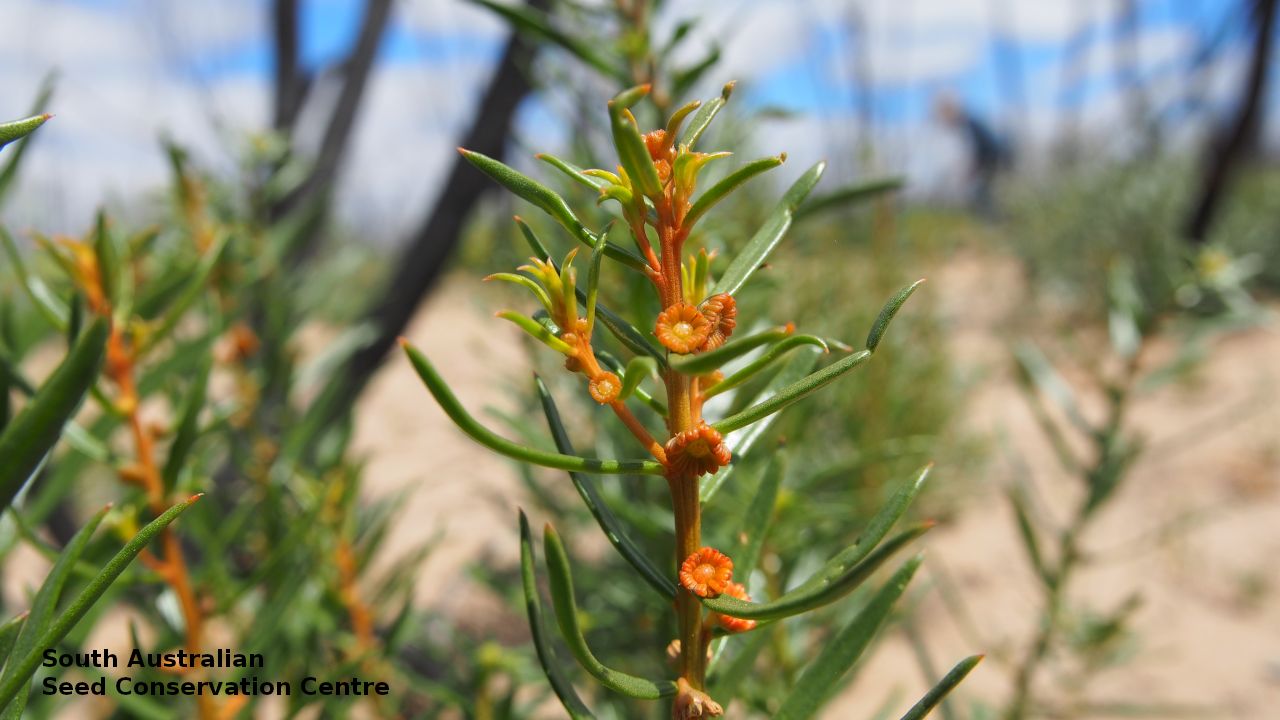
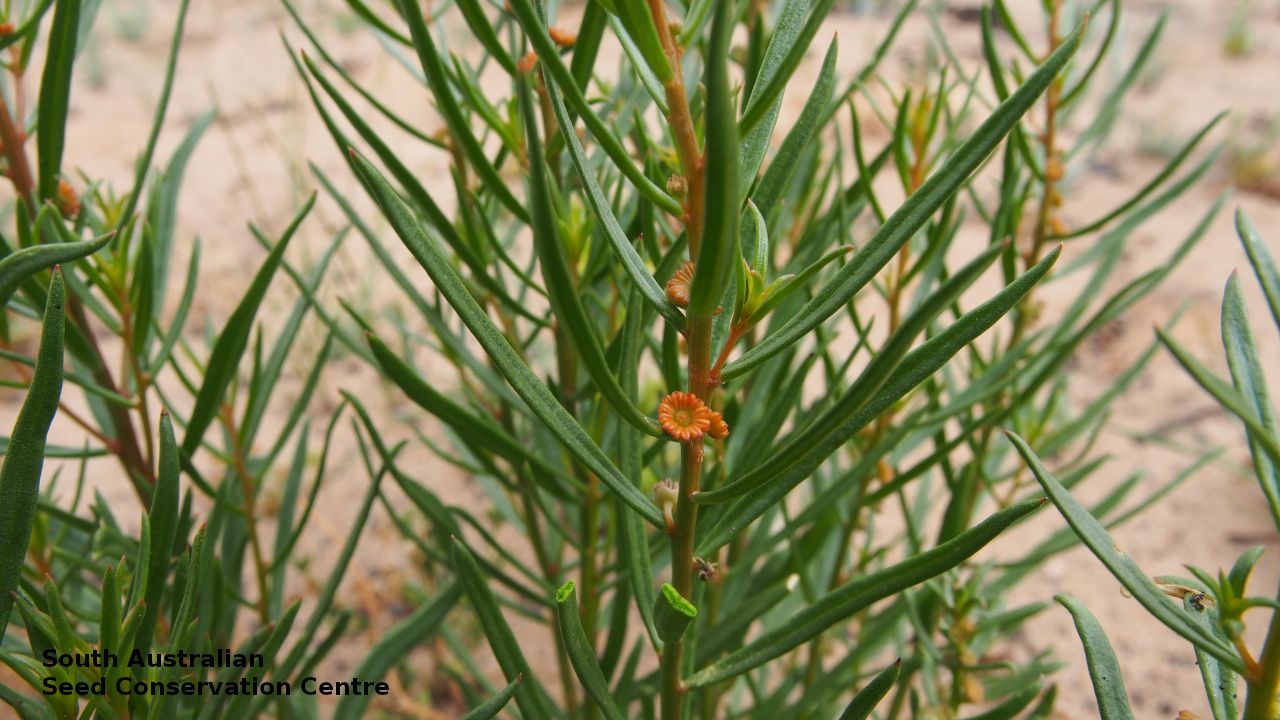
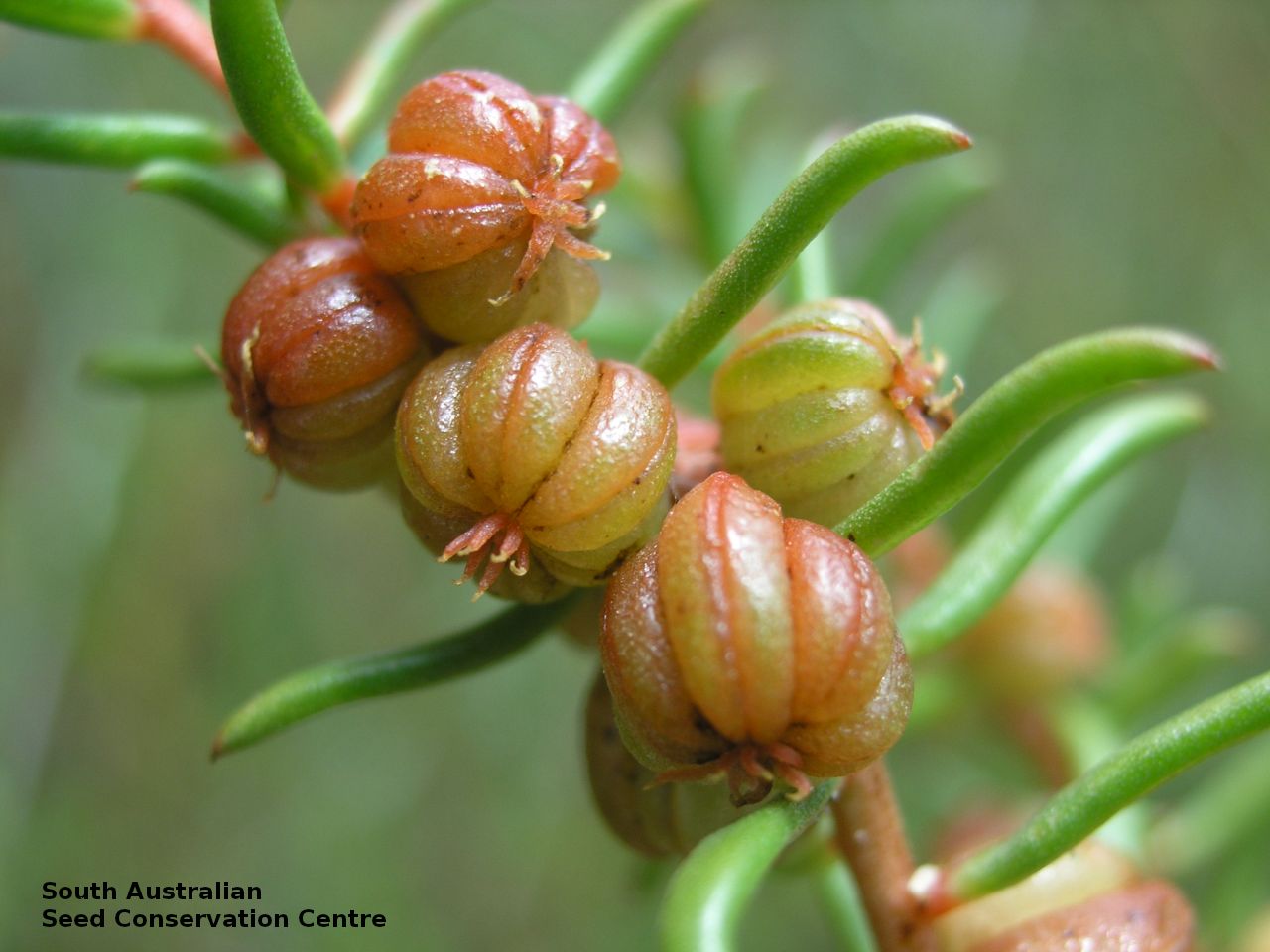
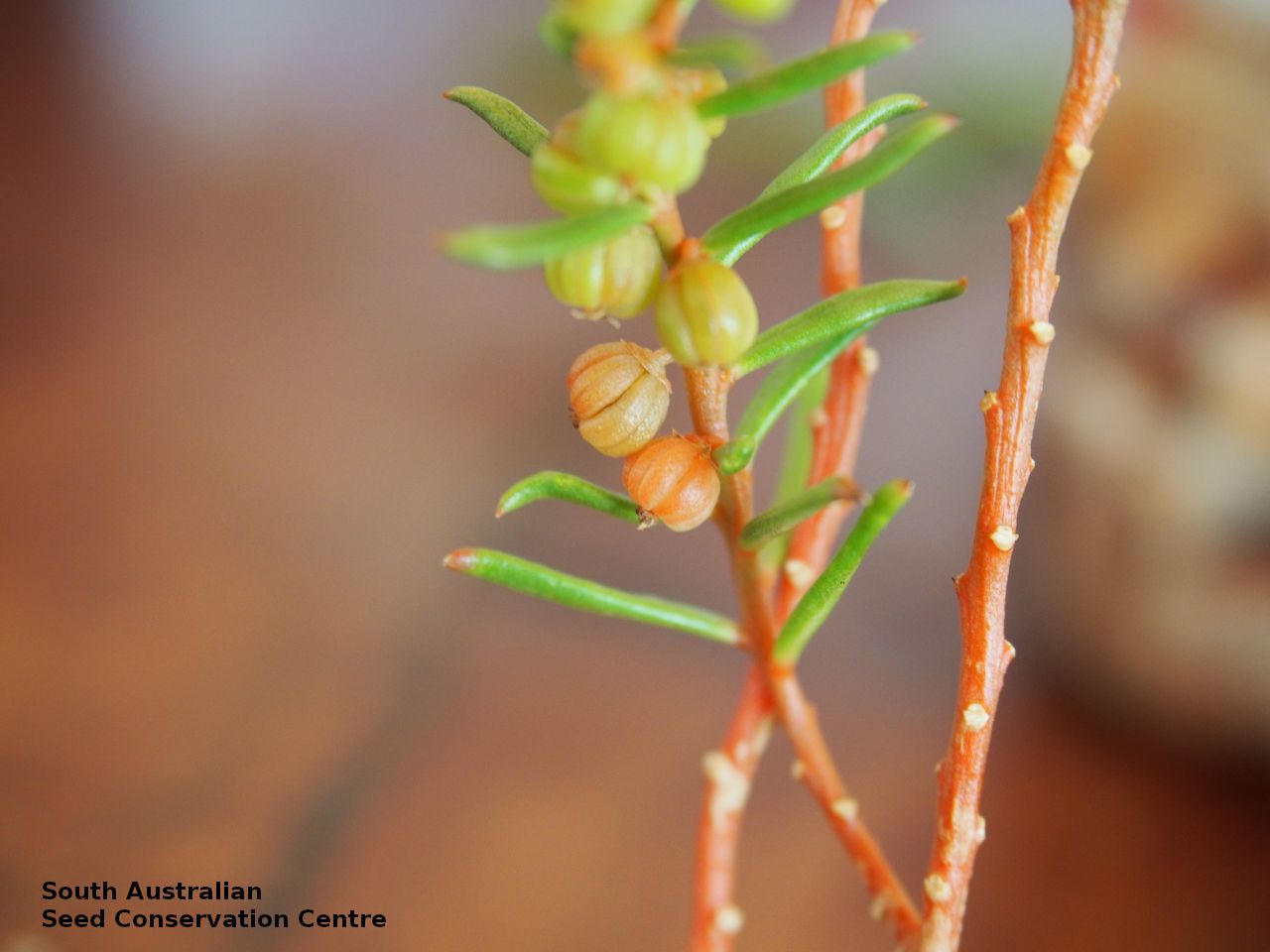
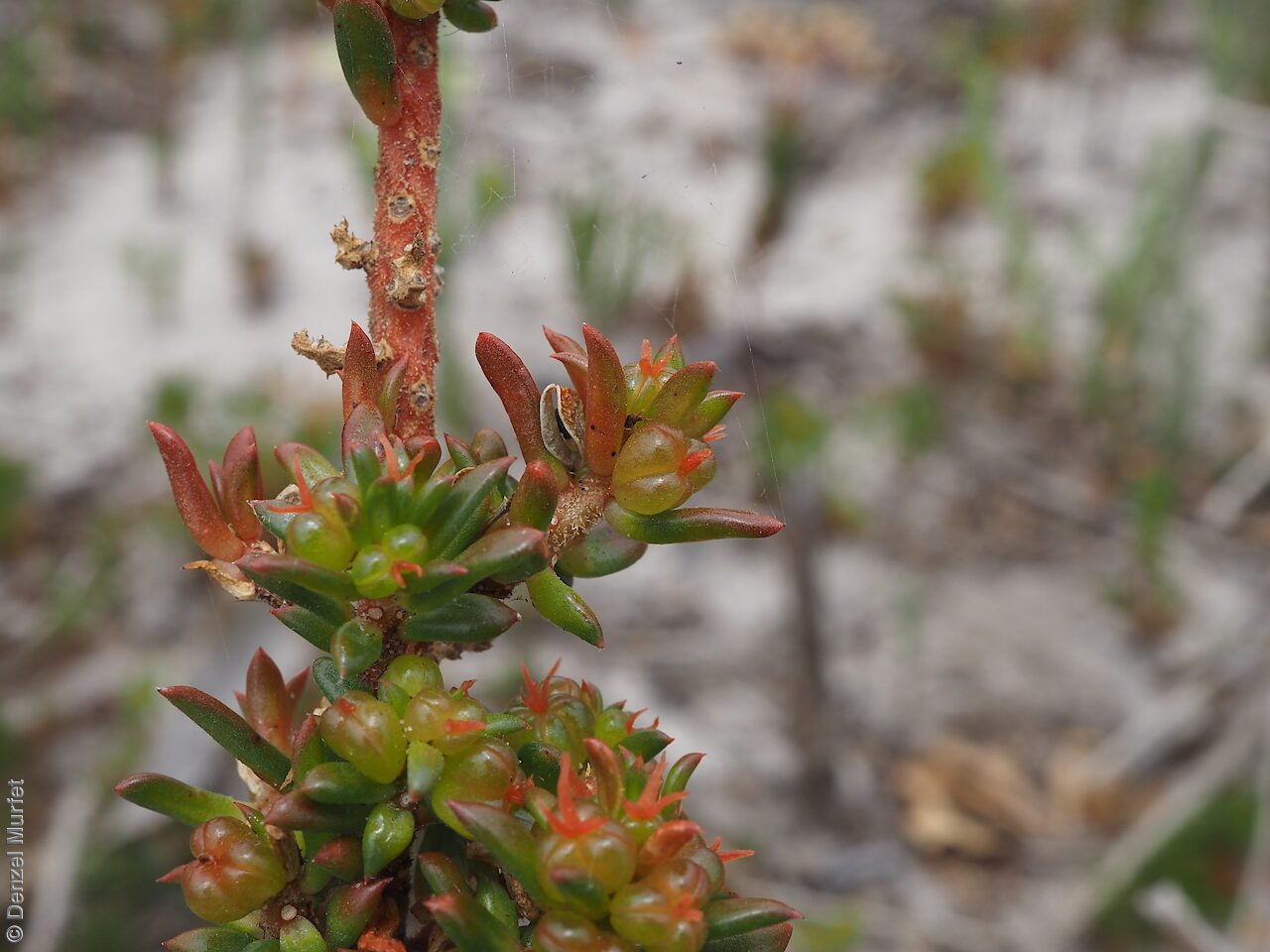
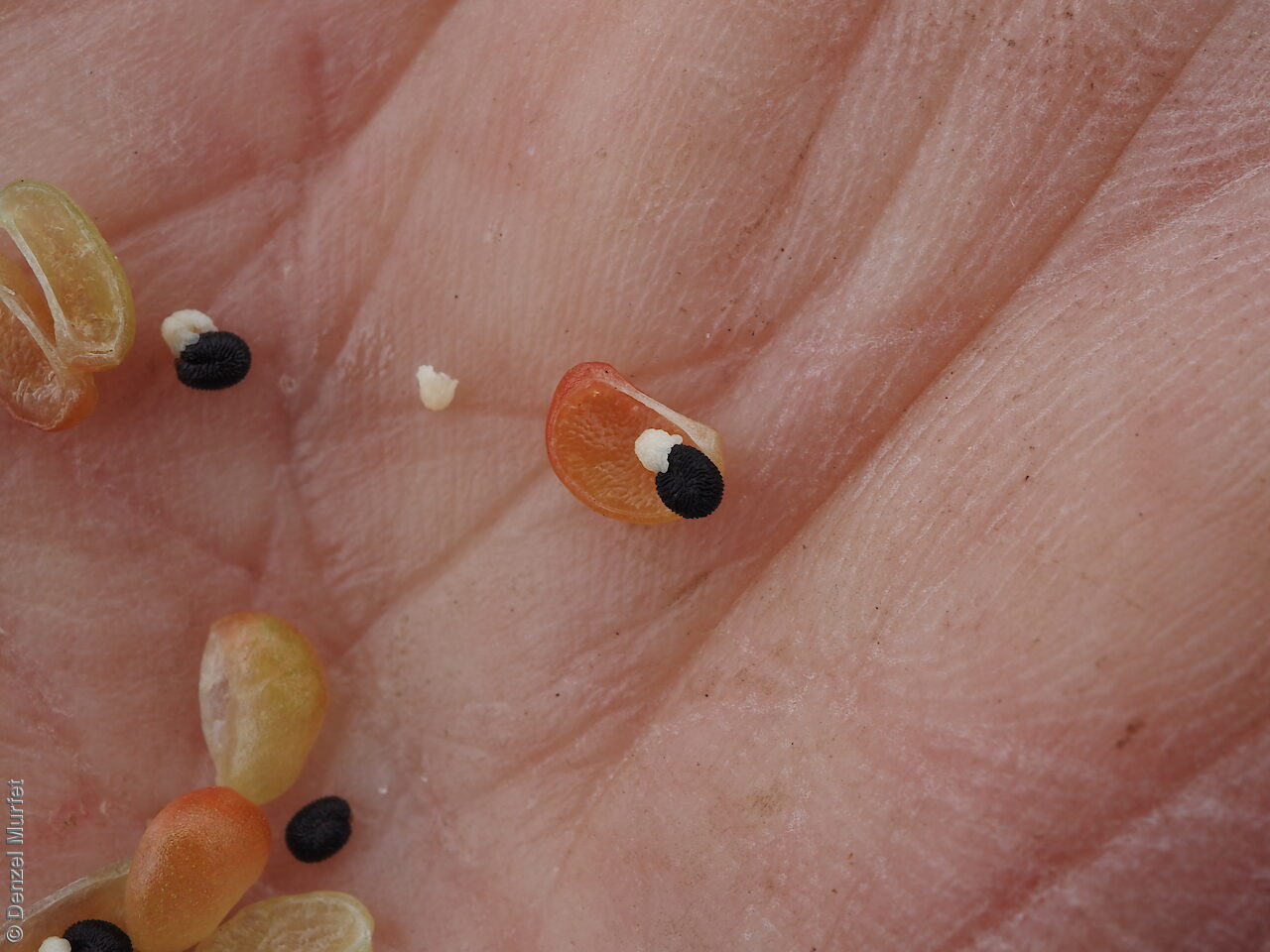
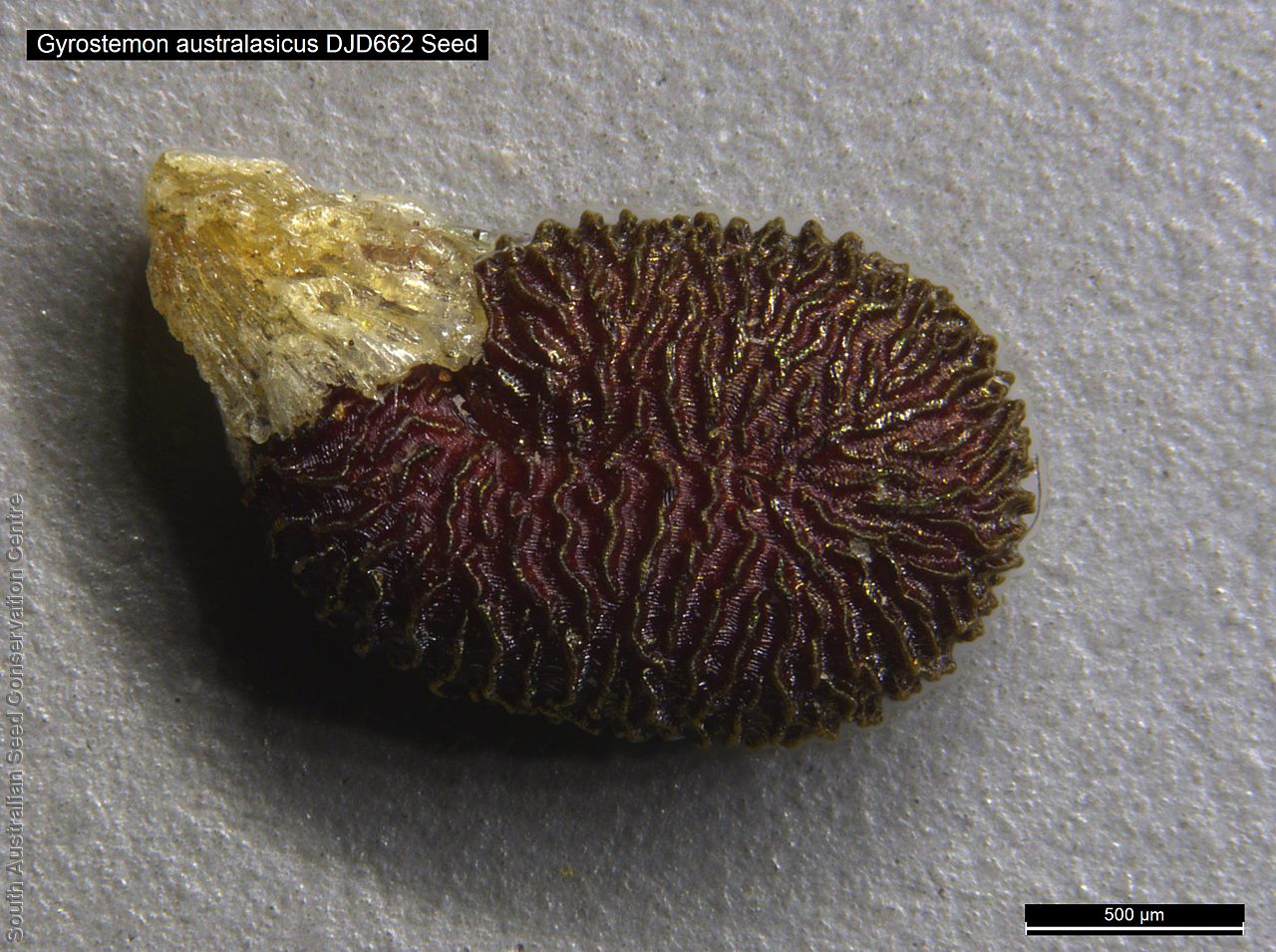
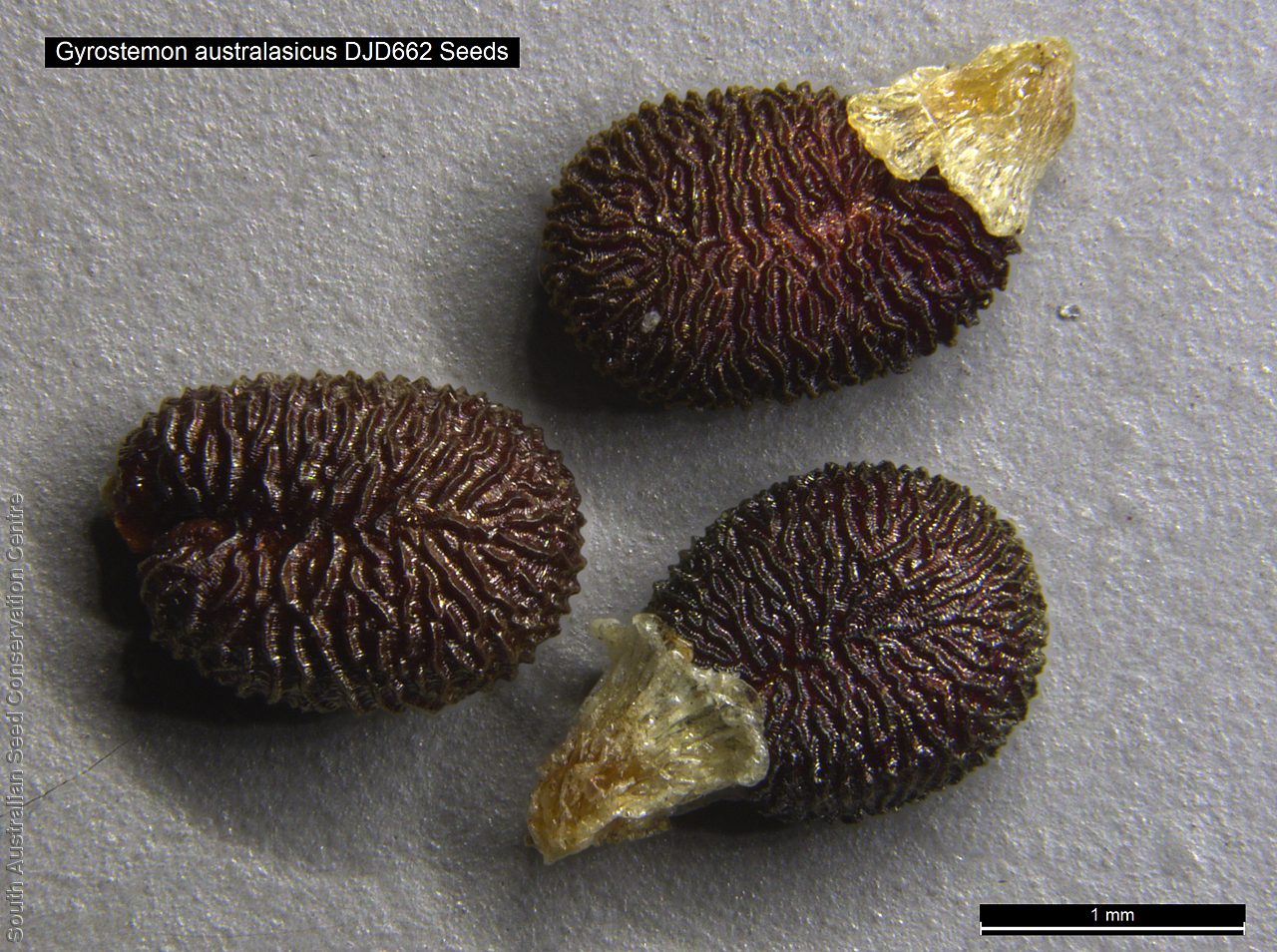

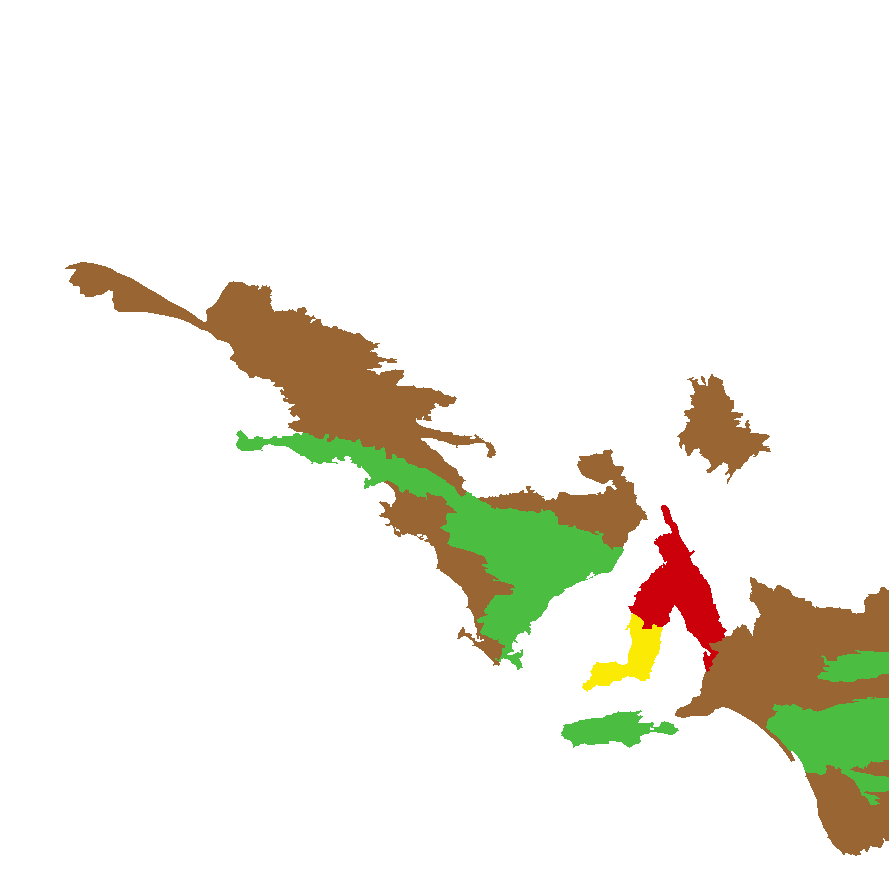
Botanical art
Prior names
Cyclotheca australasica
Common names
False Buckbush
Buckbush Wheel-fruit
Etymology
Gyrostemon from the Greek 'gyros' meaning a circle and 'stemon' meaning a stamen, alluding to the whorled stamens. Australasicus means of or from Australasia, referring to the species' distribution.
Distribution and status
Found in southern South Australia growing on sand in heath and mallee shrublands. Also found in New South Wales and Victoria. Native. Uncommon in South Australia. Uncommon in the other States. More common in the first few years following fire.
Herbarium regions: Flinders Ranges, Eyre Peninsula, Murray, Yorke Peninsula, Southern Lofty, Kangaroo Island, South Eastern, Green Adelaide
NRM regions: Adelaide and Mount Lofty Ranges, Eyre Peninsula, Kangaroo Island, Northern and Yorke, South Australian Arid Lands, South Australian Murray-Darling Basin, South East
AVH map: SA distribution map (external link)
Plant description
Short-lived erect shrub to 1 m high; dioecious. Leaves narrowly linear-terete, sometimes broader above, often grooved, to 50 mm long and 1.5 mm wide; stipules triangular. All flowers with calyx to 1 mm long; pedicels to 2 mm long, recurved. Male flower calyces shallowly and broadly lobed; stamens 9–14. Female flower calyces with ovate-triangular, acute lobes; carpels 4–7; stigmas to 4 mm long, finely rugose. Flowering between July and December. Fruits are reddish fruit to 5 mm diameter, fleshy with multiple segments. Seeds are dark brown to black reniform seeds to 2 mm long and 1.5 mm wide, with a rugose surface and a yellowish aril Seed embryo type is curved linear fully developed.
Seed collection and propagation
Collect seeds between September and December. Collect fruits that are plump, turning reddish or starting to dry and fall off easily. Place the fruits in a tray and leave to dry for a week. Then rub the fruit gently by hand to dislodge the seeds from the papery wing. Use a sieve to separate the unwanted material. Store the seeds with a desiccant such as dried silica beads or dry rice, in an air tight container in a cool and dry place. From one collection, the seed viability was average, at 75%. This species is generally difficult to germinate. It has morpho-physiological dormancy and complex germination requirements. This species is considered a fire responsive species.
| Location | No. of seeds (weight grams) | Number of plants | Date collected | Collection number Collection location | Date stored | % Viability | Storage temperature |
|---|---|---|---|---|---|---|---|
| BGA MSB | 16,500 (18.05 g) 10,500 (11.56 g) | 13-Nov-2006 | DJD662 Kangaroo Island | 1-Aug-2007 | 75% | -18°C | |
| BGA | 5,900 (5.656 g) | 50+ | 10-Apr-2022 | BKB61 Kangaroo Island | 7-Jul-2022 | 95% | -18°C |
Number of plants: This is the number of plants from which the seeds were collected.
Collection location: The Herbarium of South Australia's region name.
% Viability: Percentage of filled healthy seeds determined by a cut test or x-ray.